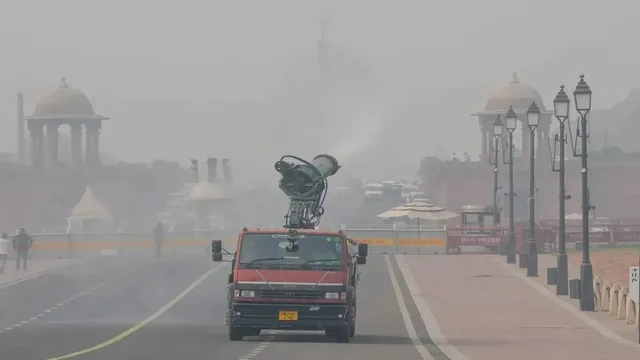- By Priyanka Koul
- Tue, 14 Oct 2025 08:05 AM (IST)
- Source:JND
Delhi-NCR Air Quality: With Diwali approaching, Delhi is bracing for a sharp decline in air quality, as pollution levels are expected to worsen through midweek, according to the Centre's Air Quality Early Warning System (EWS). This marks the first "poor" air quality forecast of the season, ending a four-month stretch of satisfactory air.
On Monday afternoon, Delhi’s 24-hour average Air Quality Index (AQI) reached 189, falling within the "moderate" category. This is a noticeable jump from Sunday’s AQI of 167, indicating deteriorating air quality.
The India Meteorological Department (IMD) has predicted minimum temperatures between 18 degrees C and 20 degrees C on Tuesday, and between 19 degrees C and 21 degrees C on Wednesday. Given the worsening air, residents are advised to take precautions to limit exposure to pollutants.
ALSO READ: Smog Stories: Can Green Firecrackers Really Make Delhi’s Diwali Less Polluted?
An AQI between zero and 50 is considered ‘good’, 51 and 100 ‘satisfactory’, 101 and 200 ‘moderate’, 201 and 300 ‘poor’, 301 and 400 ‘very poor’, and 401 and 500 ‘severe’.
EWS forecasts suggest air quality will remain "poor" from October 14 to 16, and may dip into the "very poor" category afterward similar to levels observed in mid-June.
Pollution Level On Rise Across Delhi-NCR
By 4 PM on Monday, monitoring stations in Anand Vihar, North Campus, and Okhla recorded AQI readings in the "very poor" range. Areas like Mathura Road and Patparganj registered "poor" air quality, according to India TV.
After a relatively clean four-month spell, the onset of stubble burning, cooler temperatures, and festive emissions has triggered the start of Delhi’s annual smog season. Experts warn that pollution levels will continue to rise until stronger winds help disperse trapped pollutants.
ALSO READ: Smog Stories: What Is AQI And How Is It Calculated By Monitoring Major Pollutants In Air? Explained
Calm conditions, low wind speeds, and seasonal transitions are all contributing to pollution build-up. While stubble burning is a major pollution source in the region, its contribution to PM2.5 levels in Delhi remained minimal as of Monday.
Delhi recorded a minimum temperature of 19 degrees C on Monday morning, with humidity at 86 per cent at 8:30 AM, the IMD reported.

